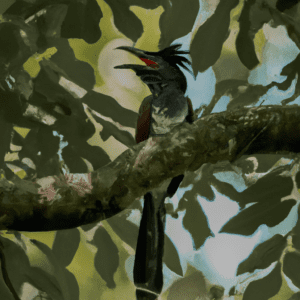Introduction: Exploring Sahara Lizards in the Desert Environment
Have you ever wondered about the fascinating world of Sahara lizards and the intricate web of relationships they navigate in the harsh desert environment? Let’s dive into the captivating realm of Sahara lizards and shed light on their predators and prey.
Imagine the vast expanse of the Sahara desert, where Sahara lizards roam amidst the scorching heat and shifting sands. These resilient creatures have adapted to survive in this challenging landscape, blending seamlessly with their surroundings. From the dunes to the rocky outcrops, Sahara lizards have carved out their niche in this unforgiving terrain.
As we delve deeper into the world of Sahara lizards, we uncover a complex ecosystem where predators lurk in the shadows, waiting for the perfect opportunity to strike. Birds of prey soar high above, their keen eyes scanning the desert floor for unsuspecting lizards. Snakes slither stealthily, their sinuous forms a silent menace to the Sahara lizards.
But Sahara lizards are not defenseless. They have evolved a myriad of strategies to outsmart their predators. Did you know that some Sahara lizards can detach their tails when threatened, distracting their would-be attackers while they make a hasty escape? It’s a remarkable adaptation that showcases the ingenuity of these desert dwellers.
On the flip side, Sahara lizards are also skilled hunters, preying on insects and small creatures that scuttle across the desert sands. Their keen eyesight and lightning-fast reflexes make them formidable predators in their own right, showcasing the delicate balance of nature in the Sahara desert.
So, as we unravel the mysteries of Sahara lizards, we are reminded of the interconnectedness of all living beings in the ecosystem. Every predator, every prey, plays a vital role in maintaining the delicate equilibrium of this harsh yet beautiful environment. Join me on this journey of discovery as we delve deeper into the hidden world of Sahara lizards and the fascinating dynamics that shape their existence.
Habitat of Sahara Lizards
In the vast expanse of the Sahara desert, Sahara lizards have carved out their unique niche, adapting to the harsh environment with remarkable resilience. These fascinating creatures have evolved to thrive in the challenging conditions of the desert, making their habitat one of the most intriguing ecosystems on Earth.
When we delve into the habitat of Sahara lizards, we uncover a world of extremes. From scorching temperatures during the day to freezing cold nights, these lizards have developed remarkable strategies to survive. Imagine a creature that can bask in the sun to raise its body temperature in the morning and quickly retreat to the shade to avoid overheating in the afternoon. It’s a delicate balance that Sahara lizards have perfected over generations, showcasing the wonders of nature’s ingenuity.
One interesting fact about the habitat of Sahara lizards is their ability to burrow deep into the sand to escape the intense heat of the desert. These lizards have specialized adaptations that allow them to regulate their body temperature and conserve water in this arid environment. It’s a testament to their remarkable evolution and survival instincts, highlighting the incredible diversity of life in the Sahara desert.
As we continue to unravel the mysteries of the Sahara lizard’s habitat, we are faced with a question: How do these creatures navigate the ever-changing landscape of the desert to find food and shelter? It’s a puzzle that scientists and researchers are still unraveling, shedding light on the intricate interactions between Sahara lizards and their environment.
In the next section, we will explore the types of predators that pose a threat to Sahara lizards and the defensive mechanisms they employ to evade danger. Stay tuned as we uncover the thrilling world of predator-prey relationships in the Sahara desert, where survival is a daily battle for these resilient reptiles.
Types of Predators Threatening Sahara Lizards
Imagine the vast Sahara desert, where Sahara lizards roam amidst the scorching heat and shifting sands. Today, we delve into the intriguing world of the predators threatening these resilient creatures.
Let me share an interesting fact with you: Did you know that Sahara lizards face a multitude of predators in their harsh desert habitat? From birds of prey soaring high above to agile snakes slithering through the dunes, these lizards are constantly on guard against potential threats.
Picture this – a Sahara lizard camouflaged against the sandy backdrop, basking in the sun’s warmth. Suddenly, a shadow looms overhead, signaling the approach of a keen-eyed falcon searching for its next meal. In this predator-prey dance, survival instincts are put to the test.
The challenge lies in the lizard’s ability to outwit its predators. With lightning-fast reflexes and keen senses, Sahara lizards have evolved unique defensive mechanisms to evade capture. From swift movements to blending seamlessly into their surroundings, these creatures have honed their skills to escape danger.
As we ponder the intricate balance of nature, consider this: How do predators shape the behavior and evolution of Sahara lizards? The predator-prey dynamic is a vital component of the ecosystem, driving adaptations and strategies that ensure the survival of both predator and prey.
In the vast expanse of the Sahara, where every encounter is a matter of life and death, Sahara lizards navigate a perilous landscape filled with predators lurking at every turn. Yet, amidst the challenges they face, these resilient creatures continue to thrive, a testament to the wonders of nature’s intricate web.
Join me as we unravel the mysteries of Sahara lizards and their predators, delving deeper into the captivating world of survival and adaptation in one of the harshest environments on Earth.
Defensive Mechanisms of Sahara Lizards
Imagine you’re a Sahara lizard, navigating the scorching sands, always on high alert for potential threats. Now, picture yourself facing off against a formidable predator in the vast desert expanse. What would you do to protect yourself?
Sahara lizards have evolved a fascinating array of defensive mechanisms to survive in their harsh environment. From blending seamlessly into the sandy terrain to executing lightning-fast escapes, these reptiles are masters of adaptation and resilience.
One of the most intriguing aspects of Sahara lizards’ defense strategies is their ability to detach their tails when under attack. Yes, you heard that right! When faced with a predator, such as a snake or bird of prey, Sahara lizards can voluntarily shed their tails as a distraction tactic. The detached tail continues to wriggle and move, diverting the predator’s attention while the lizard makes a speedy getaway to safety.
This remarkable ability not only confuses predators but also allows Sahara lizards to escape potential harm without sacrificing their lives. It’s like having a built-in decoy that buys them precious time to evade danger—a true marvel of nature’s ingenuity.
Moreover, Sahara lizards are adept at camouflaging themselves to blend in seamlessly with their surroundings. Their skin coloration and texture mimic the sandy desert landscape, providing them with excellent camouflage against predators and enabling them to remain hidden from sight.
As we delve deeper into the defensive mechanisms of Sahara lizards, we uncover a world of survival tactics that showcase the remarkable adaptability and resourcefulness of these desert dwellers. From tail detachment to camouflage, these reptiles have honed their skills over millions of years to outwit predators and thrive in one of the harshest environments on Earth.
So, the next time you spot a Sahara lizard darting across the desert sands, take a moment to appreciate the incredible feats of survival that lie beneath its seemingly ordinary exterior. Nature’s wonders never cease to amaze, especially when it comes to the ingenious defensive strategies of creatures like the Sahara lizard.
Prey of Sahara Lizards in the Desert
As we delve into the world of Sahara lizards and their prey in the desert, it’s fascinating to uncover the intricate web of interactions that shape their survival in such a harsh environment. One interesting fact to ponder is that Sahara lizards have adapted unique hunting strategies to secure their prey amidst the challenging conditions of the desert.
Imagine a Sahara lizard stealthily stalking its prey, utilizing its keen senses to detect even the slightest movement in the vast expanse of sand dunes. These lizards are not only hunters but also agile predators, relying on their speed and agility to capture insects and small creatures scurrying across the desert floor.
Have you ever wondered how Sahara lizards manage to thrive in a habitat where resources are scarce and competition for food is intense? This raises a thought-provoking question: What evolutionary adaptations have Sahara lizards developed to outsmart their prey and evade their own predators in the unforgiving desert landscape?
One practical tip to keep in mind is that Sahara lizards have evolved specialized camouflage techniques to blend seamlessly into their surroundings, making them both elusive predators and elusive prey. By mastering the art of disguise, these creatures have honed their survival skills to navigate the challenges of their environment with remarkable efficiency.
As we unravel the mysteries of Sahara lizards and their prey, it becomes evident that these creatures play a crucial role in maintaining the delicate balance of the desert ecosystem. Their interactions with prey species shape the dynamics of the food chain, highlighting the interconnectedness of all living organisms in this unique environment.
In conclusion, the world of Sahara lizards offers a captivating glimpse into the wonders of nature, where survival is a constant struggle and adaptation is the key to thriving in the face of adversity. Let us continue to marvel at the resilience and ingenuity of these remarkable creatures as they navigate the vast expanse of the Sahara desert, embodying the beauty and complexity of the natural world.
Interactions Between Sahara Lizards and Their Predators
When it comes to the interactions between Sahara lizards and their predators, it’s truly a fascinating dance of survival in the harsh desert environment. Picture this: a stealthy sand viper quietly slithering through the dunes, its eyes fixated on a group of Sahara lizards basking under the scorching sun. These lizards, well-aware of the lurking danger, rely on their keen senses and lightning-fast reflexes to outmaneuver their potential predators. It’s like a high-stakes game of cat and mouse, only in the vast expanse of the Sahara desert.
The Sahara lizards have evolved remarkable defensive mechanisms to evade their predators, ranging from camouflage that blends seamlessly with the desert landscape to the ability to shed their tails when caught—a clever distraction tactic that allows them to escape and regenerate their lost appendage later. Imagine witnessing this incredible display of adaptation and survival skills firsthand—it’s nature’s own thrilling drama playing out in the searing heat of the desert.
As we delve deeper into these predator-prey interactions, we begin to unravel the intricate web of dependencies that sustain the delicate balance of the desert ecosystem. Have you ever wondered how the presence of Sahara lizards influences the behavior of their predators, shaping the dynamics of the food chain in this unforgiving environment? It’s a thought-provoking question that invites us to ponder the interconnectedness of life in the desert and the ripple effects of every predator’s hunt and every prey’s escape.
In the vast expanse of the Sahara desert, where survival is a constant battle against the elements and predators, the Sahara lizards stand as resilient symbols of adaptation and tenacity. Their evolutionary journey is a testament to the enduring spirit of life in one of the harshest environments on Earth. So next time you catch a glimpse of a Sahara lizard darting across the desert sands, remember the intricate dance of survival it performs every day—a captivating tale of predator and prey in the heart of the desert.
Impact of Climate Change on Sahara Lizards
Imagine standing in the vast Sahara desert, surrounded by the stark beauty of the dunes and the scorching sun beating down on the arid landscape. In the midst of this harsh environment, Sahara lizards thrive, adapting to survive in one of the most challenging habitats on Earth.
As we delve into the impact of climate change on these resilient creatures, it becomes evident that their existence is increasingly threatened by rising temperatures and shifting weather patterns. The delicate balance of the ecosystem they inhabit is being disrupted, posing a significant challenge to their survival.
Climate change not only affects the Sahara lizards directly but also has ripple effects on their predators and prey. With rising temperatures altering the availability of food sources and changing the behavior of their predators, Sahara lizards are faced with a changing landscape that requires them to adapt quickly to ensure their continued existence.
In the face of this challenge, conservation efforts play a crucial role in safeguarding the future of Sahara lizards. By raising awareness about the impact of climate change on these unique creatures and their ecosystem, we can work towards implementing measures to mitigate the effects of environmental changes and protect their habitats.
The plight of Sahara lizards serves as a poignant reminder of the interconnectedness of all living beings and the need for collective action to preserve the diversity of life on our planet. By taking steps to address the challenges posed by climate change and supporting conservation initiatives, we can ensure that these fascinating creatures continue to roam the Sahara desert for generations to come.
Conservation Efforts for Sahara Lizards
Conservation efforts for Sahara lizards are crucial in preserving the delicate balance of their ecosystem. Imagine a world without these fascinating creatures – a world where the desert sands feel emptier, the sunsets less vibrant. It’s a scenario that we must work together to avoid.
One practical tip to contribute to the conservation of Sahara lizards is to support organizations dedicated to protecting their habitat. By donating to or volunteering with these groups, you can directly impact the preservation of these unique reptiles and their environment. Every small effort counts towards ensuring the longevity of Sahara lizards for future generations to marvel at.
Imagine taking a walk in the Sahara desert and stumbling upon a group of Sahara lizards basking in the sun. The sight of their intricate patterns and swift movements is a reminder of the beauty of nature. Now, picture a world where these creatures are no longer a part of the landscape. How would it feel to lose such a remarkable species?
By actively engaging in conservation efforts, we can prevent this hypothetical scenario from becoming a reality. Together, let’s work towards safeguarding the Sahara lizards and the diverse ecosystem they call home. After all, the fate of these enchanting creatures lies in our hands. Let’s ensure that their presence continues to grace the desert sands, adding a touch of wonder to our world.
Fascinating Facts About Sahara Lizards
Sahara lizards are truly remarkable creatures, and today we’re diving into some fascinating facts that will leave you in awe. Did you know that Sahara lizards possess a unique adaptation that allows them to survive in the harsh desert environment? These resilient reptiles have developed specialized skin that helps them retain moisture, crucial for their survival in the arid Sahara.
One of the most intriguing aspects of Sahara lizards is their incredible ability to change color based on their surroundings. This remarkable camouflage not only helps them blend in with the desert terrain but also serves as a defense mechanism against predators. Imagine witnessing a Sahara lizard seamlessly blend into the sandy dunes, almost like a master of disguise in the vast desert landscape.
In addition to their camouflaging skills, Sahara lizards are known for their agile movements and lightning-fast reflexes. Watching these creatures dart across the desert sands with precision and speed is a sight to behold. It’s like witnessing a perfectly choreographed dance in the midst of the harsh Sahara wilderness.
Now, picture this – you’re exploring the Sahara desert, and suddenly, you come across a group of Sahara lizards engaged in a fascinating territorial display. These lizards use intricate body language and vocalizations to communicate with each other, establishing dominance and boundaries in their sandy domain. It’s like witnessing a miniature kingdom come to life right before your eyes.
As you delve deeper into the world of Sahara lizards, you’ll discover a myriad of captivating behaviors and adaptations that make these creatures true desert survivors. From their unique physiology to their captivating behaviors, Sahara lizards are a testament to the incredible diversity of life in the desert ecosystem. So, the next time you spot a Sahara lizard basking in the desert sun, take a moment to appreciate the marvels of nature that unfold in the vast expanse of the Sahara.
Conclusion: Preserving the Ecosystem of Sahara Lizards
Have you ever stopped to marvel at the fascinating world of Sahara lizards and their intricate survival strategies in the harsh desert environment? These resilient creatures are truly remarkable in their ability to thrive amidst the challenging conditions of the Sahara.
Imagine this: a scorching desert landscape stretching endlessly before you, with the sun beating down relentlessly. Yet, amidst this harsh environment, Sahara lizards navigate their habitat with remarkable agility and grace. One interesting fact about these lizards is their incredible camouflaging abilities, allowing them to blend seamlessly into the sandy terrain to evade potential predators.
Now, let’s delve into the intriguing dynamics of Sahara lizards and their interactions with predators and prey. These lizards face a myriad of threats from predators such as snakes, birds of prey, and even larger mammals. Despite these challenges, Sahara lizards have evolved unique defensive mechanisms to protect themselves, including swift movements, camouflage, and the ability to detach their tails to escape from predators.
As we explore the complex web of relationships between Sahara lizards, their predators, and prey, it becomes apparent that these interactions play a crucial role in maintaining the delicate balance of the desert ecosystem. The survival of Sahara lizards is not just a matter of individual species but has broader implications for the ecosystem as a whole.
Consider this thought-provoking question: How can we ensure the preservation of Sahara lizards and their habitat in the face of environmental challenges and human impact? Conservation efforts and raising awareness about the importance of protecting these unique creatures are vital steps towards safeguarding their future.
In conclusion, the world of Sahara lizards is a captivating realm filled with resilience, adaptation, and survival. By gaining a deeper understanding of these remarkable creatures and the challenges they face, we can appreciate the intricate beauty of nature and the interconnectedness of all living beings.




